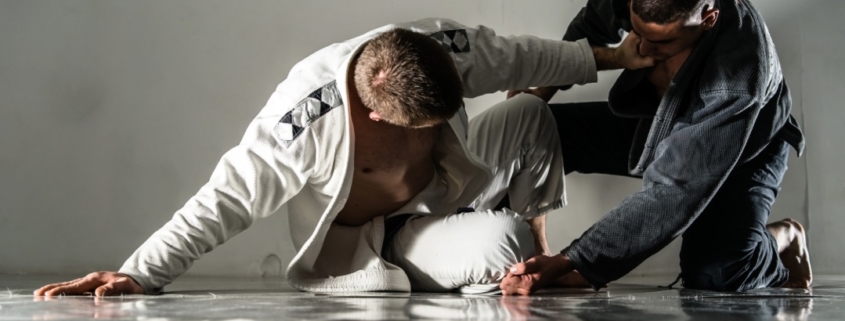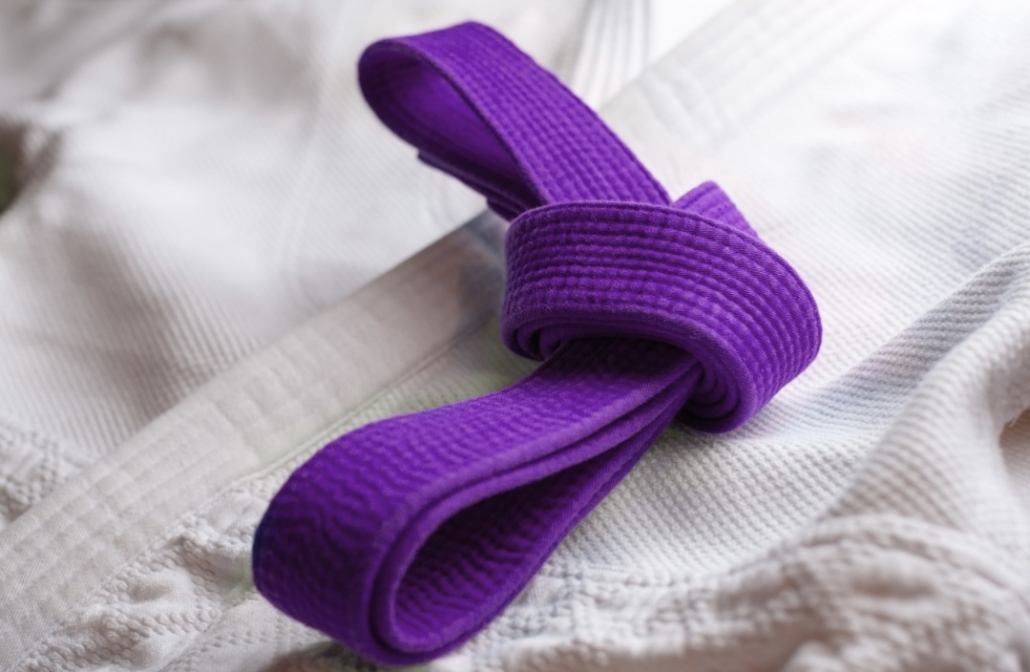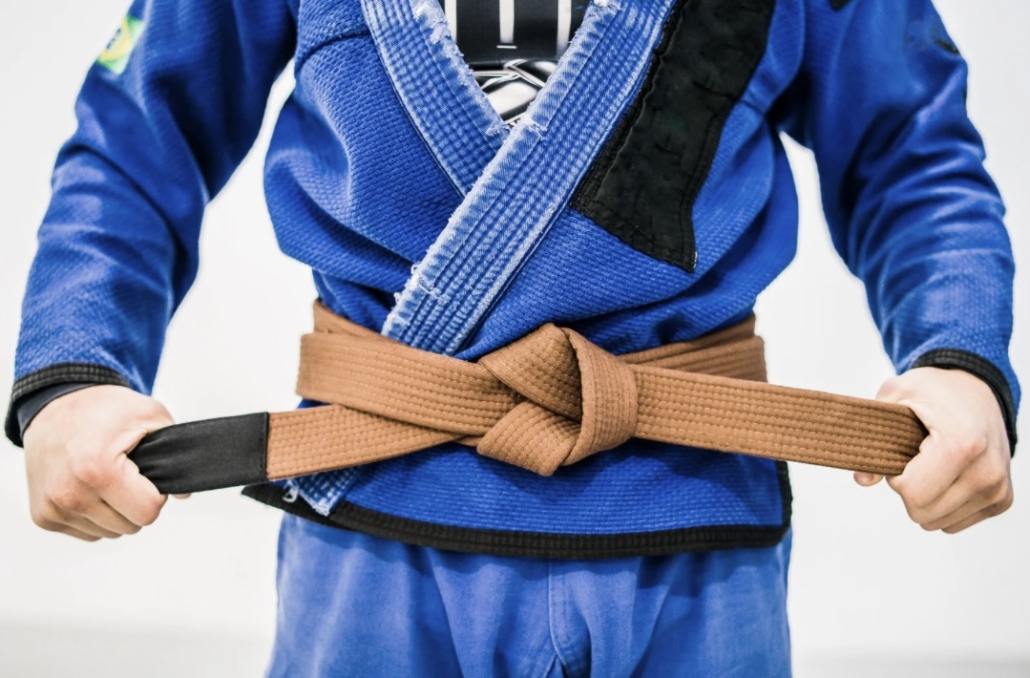One of the most common questions and curiosities for new BJJ students is how long it takes to get their next belt. Belts are a symbol of status and experience, so it makes sense to want to rise through the ranks of your gym quickly to gain respect amongst your peers. However, like all the best things in life, each belt is earned through dedication and hard work and focusing on promotion will only make your BJJ journey feel tedious and chore like rather than the true learning experience it is meant to be.
In this article we will summarize the IBJJF graduation system, given that they are the largest and most significant BJJ organization in the world. It is important to note that all gyms are allowed to have their own unique systems for promotion, but they musts follow IBJJF rules if they want to be a partnered gym and their students will only be allowed to compete in IBJJF sanctioned tournaments at the belt they would have followed the IBJJF promotion rules.
Adolescent Ranking System
Adolescents are classified as “Athletes between 04 to 15 years old”. Unlike the well-known white, blue, brown, and black belts used for adults, adolescents have their own colors: white, grey, yellow, orange, and green. Also, unlike the adult system, each color (except white) begins with a white stripe, then no stripe, then a black stripe, totaling 13 possible belts for adolescents. While there are no time requirements for each belt like there are for adult belts, IBJJF recommends children remain at each belt for at least one year before moving to the next. IBJJF does not recognize blue belts until athletes are age 16 so this system allows younger students to have a more consistent sense of progression and hopes to encourage them to stay in the sport. The lack of time requirements also allows coaches and professors to use their own discretion when making promotions given the abilities of their younger athletes, who are growing and changing much quicker than adults.
Adult Ranking System
The adult ranking system has far fewer belts and promotions than the adolescent system but is far more complicated and for good reason. Due to the fact that the IBJJF is responsible for sanctioning and hosting the international BJJ world championships and various regional/continental championships, there needs to be a centralized set of rules and regulations to ensure the fairness of each competition. To be clear, these rules determine which divisions athletes are allowed to compete in and as a result tend to be followed by gyms for the sake of continuity, but do not necessarily match the exact progression structure of every gym.
There are technically 8 belts in the IBJJF adult system: white, blue, purple, brown, black, red and black, red and white, and red. There are very few people in the world who ever make it officially past black belt so for now we will only concern ourselves with the first 4 belts. Within each belt, there are four “degrees” or stripes awarded to recognize your progress, however IBJJF competitions only separate divisions by belt color. The time between each are dependent on your gym and professors, so if you are curious about it you should speak to your professor(s) or coach(es).
Why minimums?
THe IBJJF sets these minimums to prevent athletes from trying to move up the ranks too quickly and ensure integrity of the traditional BJJ belting system, not as a goal or benchmark to be reached. Very few athletes in the world are capable of progressing through the BJJ ranking system as quickly as the following IBJJF minimums make possible. It is very rare for professors to even endorse this fast rate of progression as they want their students to learn as much as possible and reach their maximum potential at each belt before moving forward. Most gyms usually have their own mandatory minimum times that are much longer than enforced by the IBJJF, so if you are curious about how long you can expect each belt to take you should ask your professor.
- White
When you begin BJJ, you will immediately be awarded a white belt. There is no IBJJF minimum time for any athlete of 16 years or older. Generally, your time at white belt will late 1-2 years but is highly dependent on your commitment to your training, development, and the approval of your professors. Take your time and enjoy being a white belt. You learn more as a white belt than at any other rank.
- Blue
Your ascent into the colored belts comes after you’ve demonstrated commitment to the sport and with the approval of your professors or coaches. At age 18 or older, you must compete at the blue belt level for at least two years. This is a hard and fast rule for students who began BJJ as an adult, but there are exceptions for those who started sooner.
At age 16 and 17, there is technically no minimum time for students at blue belt if they are competing in the Juvenile 1 and Juvenile 2 divisions. If they would like to compete in the adult divisions, there are stricter rules. At age 18 and older, if a student was awarded their grey, yellow, or orange belt as an adolescent the minimum time at blue belt goes down to 1 year and has no minimum if they were awarded a green belt, previously competed as a blue belt in J1/2 divisions, or if they are the Adult Blue Belt World Champion.
- Purple
After reaching your purple belt, you must compete in purple belt divisions for at least one and a half years or only one year if previously competing in J1/2 as a blue belt. There is no minimum if previously registered as orange or green belt AND J1/2 blue belt, if previously registered as a juvenile purple belt, or if an Adult Purple Belt World Champion.
- Brown
The minimum time at brown belt is one year with no minimum time if an athlete is the Adult Brown Belt World Champion. As with purple belts, students may stay at brown belt for 2+ years or may never reach black belt.
- Black Belt Certificate and Degrees
Black Belt is a special rank in BJJ and is the highest rank that most BJJ students will ever see in real life. The IBJJF rules surrounding the granting of and promotion after a black belt are deserving of a blog post of their own, but we will provide a high-level overview of the time requirements to give an understanding of just how much time your professors and other black belts you meet have committed to BJJ.
Once a black belt is granted, the first three additional ranks or “stripes” are added to a black belt after each 3-year period of “proven activity” in the Black Belt under IBJJF, totaling 9 years. The fourth, fifth, and sixth stripes are awarded after and additional 5 years each, totaling 15 years. The seventh (Red and Black Belt) and eighth stripes (Red and White Belt) are awarded after an additional 7 years each, totaling 14 years. The 9th and final stripe (Red Belt) is awarded after an additional 10 years. In total, reaching the 9th degree black belt (or Red Belt) in BJJ will take a minimum of 48 years after being granted a black belt. Keep in mind that this is 48 years of qualifying BJJ activity under IBJJF rules.
There is a 10th degree that has only been and will only be awarded to the pioneers of BJJ: Carlos, Oswaldo, George, Gastão e Helio.
There are levels to this sport and your belt is a sign of your dedication. The time it takes to move between belts may feel daunting, but belt progression is not the point of BJJ. You should strive to learn as much as possible at each belt and know that your promotion will come inevitably with time. Your professor will promote you when they determine you have reached your potential at each belt, not based on your performance against your peers or in competition. Take your time and enjoy the sport rather than worry about your rank or the ranks of others.







